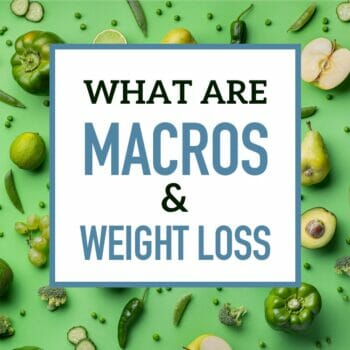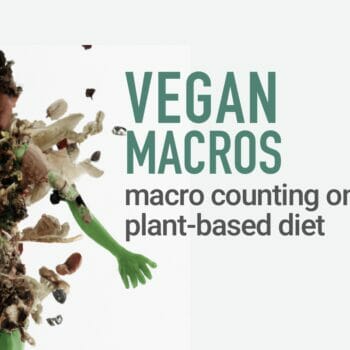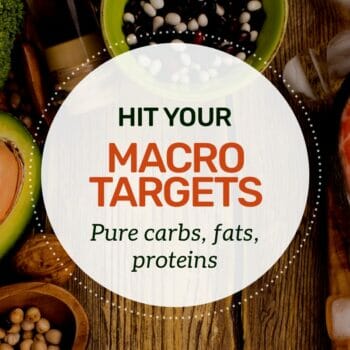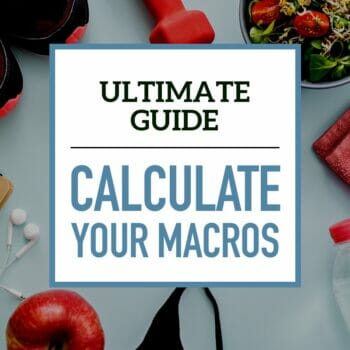Fat: the Misunderstood Macro – Are You Eating Enough?
If you were a part of the ’80s and ’90s low-fat diet culture, deliberately adding fat to your diet might be difficult.
Healthy fat not only supports optimal body functioning but also accelerates fat loss.
I hope for those still afraid of eating fat, this post will help you learn to embrace it as the healthy macronutrient that it is.
What are the best fat macros?
About 25-30% of your daily calories should come from the fat macro, which is exactly what the macro diet recommends.
However, because fat is more calorie-dense for its weight, the actual physical amount of fat is more like 14-15% of daily food.
Confused? Fat has 9 calories per gram, compared with protein and carbs (both have 4 calories per gram).
For an average female who eats a 1500-calorie diet, this equates to 50 grams of fat per day or about 17 grams per meal.
Use the macro calculator to determine how many fat grams you should eat.
Suggested fat macros
Choose your daily calorie amount, and see how much fat you should eat.
| Daily Calories | Fat Grams (25-30% of Daily Calories) |
|---|---|
| 1300 | 36 – 43 g |
| 1400 | 39 – 46 g |
| 1500 | 42 – 50 g |
| 1600 | 45 – 53 g |
| 1700 | 48 – 56 g |
| 1800 | 50 – 60 g |
| 1900 | 53 – 63 g |
| 2000 | 56 – 67 g |
| 2100 | 58 – 70 g |
| 2200 | 61 – 73 g |
| 2300 | 64 – 77 g |
| 2400 | 67 – 80 g |
| 2500 | 69 – 83 g |
Which type of fat is best?
Fat can be divided into three groups.
- Monounsaturated Fat
Found in plant-based fats such as olive oil and avocado. - Polyunsaturated Fat
Found in plant-based fats like soybean oil and corn oil. - Saturated Fat
Found in animal fats and palm oils.
Do you remember when margarine (mainly hydrogenated polyunsaturated plant oil) was going to save the world from heart disease?
Unfortunately, we learned that these kinds of fats contribute to heart disease.
Most processed foods contain high amounts of polyunsaturated fats. These oils, rich in omega six fatty acids, disrupt your body’s healthy omega 3 to 6 balance, causing inflammation.
Animal fats high in omega-3 fatty acids, such as salmon and other fatty fish, are especially healthy.
The benefits of monounsaturated fats, prevalent in olive oil and integral to the acclaimed Mediterranean Diet, are well-backed by research.
Is saturated fat bad or not?
Once vilified, saturated fats are now considered ‘okay’ when included moderately in a diet free of refined carbs.
A massive UK review examined 72 studies and found no clear evidence that lowering saturated fats reduced heart disease.
Choose lean meats like chicken and turkey most of the time, but it is ok to have some red meat or pork occasionally.
Can you eat too much good fat?
Yes.
- Aim for the daily amount of fat (25-30% of calories).
- Aim to eat fats in the proper balance.
Fats should be consumed in this order:
- First, consume mostly monounsaturated,
- then plant saturated,
- then animal saturated,
- then omega six dominant polyunsaturated fat.
What about Canola Oil?
Although it is high in monounsaturated fat, the way Canola oil is produced, processed, and stored leaves a lot of questions regarding its inclusion in a healthy diet.
A simple rule-of-thumb
Choose oils that require the least steps from whole food to oil.
These oils, such as olive, flaxseed, and avocado oil, can be cold-pressed.
Which fats do I use for cooking?
Olive, avocado, coconut, and peanut oil are best.
Use coconut or peanut oil for high-temperature cooking. If the oil smokes, it’s too hot for that type of oil.
- Add a teaspoon of olive or coconut oil when sautéing veggies for stir-fries or omelets.
- Use light olive oil in baking when oil is called for.
- Use coconut oil or butter when shortening is called for.
- Pan-fry fish or chicken with a little coconut oil or peanut oil.
- Roast root vegetables like sweet potato and fresh beets with olive oil, salt, and balsamic vinegar.
Which fats do I use for snacking?
The best fats to snack on are nuts and avocados.
Most nuts contain healthy fat ratios and a nice hit of protein to keep you satiated longer.
- Eat a handful of raw almonds, walnuts, cashews, or pecans. A little salt is ok.
- One tablespoon of natural peanut butter eaten with a ripe banana is a great, satisfying snack.
- 1/2 an avocado, salt, and celery is a great snack. Spice it up with a little hot sauce.
Which fats do I use in salads?
A little oil makes salads taste great, and some of the nutrients in your salad can’t be absorbed without that fat.
Unfortunately, finding pre-made salad dressings is almost impossible without seeing soybean or canola oil on the label.
I have yet to find a mayonnaise that isn’t dominant in soybean or canola, even if they say olive oil on the label.
The Solution? Make your own!
This requires a little effort, but homemade dressings keep well in the fridge for weeks.
- Make mayo with olive or avocado oil, lemon juice, salt, and apple cider vinegar.
- Olive oil, salt, pepper, and balsamic vinegar is a savory yet simple dressing.
- Make ranch dressing using a seasoning packet, greek yogurt, and your homemade mayo. (Just omit the seasoning and add blue cheese, celery salt, and black pepper for blue cheese.)
How do I increase omega-3 fats?
- Eat salmon, tuna, or other cold-water fish a few times weekly.
- Add a tablespoon of ground flaxseed to your oatmeal or daily smoothie.
- Eating grass-fed beef/animals and grass-fed dairy products, as well as omega 3 enriched eggs, also delivers omega 3.
Don’t be afraid of fat
Don’t shy away from healthy fats—they’re key for tissue growth, repair, and keeping your brain sharp.
To determine the optimum amount of fats you should be eating, use the macro calculator.
View article sourcesSources
- Estruch, R., Ros, E., Salas-Salvadó, J., Covas, M. I., Corella, D., Arós, F., ... & Martínez-González, M. A. (2013). Primary prevention of cardiovascular disease with a Mediterranean diet. New England Journal of Medicine, 368(14), 1279-1290. Study Link
- Simopoulos, A. P. (2002). The importance of the ratio of omega-6/omega-3 essential fatty acids. Biomedicine & pharmacotherapy, 56(8), 365-379. study link
- Ascherio, A., & Willett, W. C. (1997). Health effects of trans fatty acids. The American journal of clinical nutrition, 66(4), 1006S-1010S. Study link.


 What Are The Best Macros For Weight Loss?
What Are The Best Macros For Weight Loss? How To Count Macros on a Vegan, Vegetarian, or Plant-Based Diet
How To Count Macros on a Vegan, Vegetarian, or Plant-Based Diet Out of a Macro For the Day? Here’s What to Eat
Out of a Macro For the Day? Here’s What to Eat Macros for Gaining Muscle and Cutting Fat
Macros for Gaining Muscle and Cutting Fat How to Calculate Your Macros for Body Transformation
How to Calculate Your Macros for Body Transformation